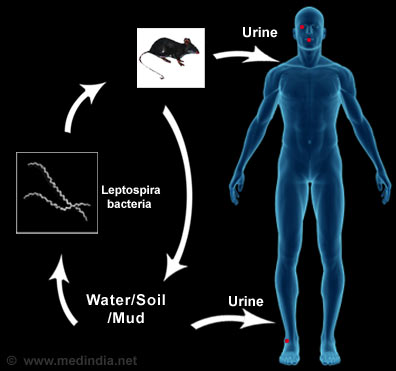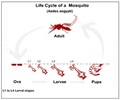About

Leptospirosis occurs worldwide, but it is most commonly acquired in the tropics. The Leptospira bacteria can infect both animals and humans. The bacteria are excreted through urine.
Human infection occurs through direct contact with the urine of an infected animal or by contact with a urine-contaminated environment, such as water, soil or plants. Once the bacteria gains access into the body, it spreads rapidly within 24 hours, causing damage to almost every organ.
Leptospirosis typically progresses through two phases of non-specific symptoms. Initial symptoms of the disease include high fever, severe headache, muscle pain, chills, redness of the eyes, abdominal pain, jaundice, hemorrhages in the skin and mucous membranes, vomiting, diarrhea and rash. The disease is usually self-limiting i.e. the patients who do not develop complications in the liver (i.e. they develop jaundice) usually recover. However 5% - 30% of untreated patients die due to involvement of the kidney - acute renal failure.
Leptospirosis is treated with antibiotics like penicillin, ampicillin, or azithromycin. The prognosis of leptospirosis is generally good. It is rarely fatal.











